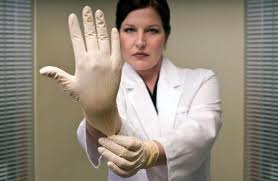Support for Pelvic Pain in Unexpected Places
/When you are experiencing pelvic pain, or pain of any kind, you may go through a range of emotions and more than likely will have a lot of questions ranging from “Why am I in pain?” to “Is this going to get better on its own?”. These are not easy questions to answer, and finding support and the right person to ask them to can be very difficult. The following are great resources that you can use in a variety of ways. You can use them to vent about issues, get advice on a range of topics, or offer your support to others dealing with pelvic pain. Just remember that these websites are not run by health care providers so be sure to consult with a medical professional before beginning any sort of treatment recommended.
Pelvic Floor Dysfunction Subreddit
Reddit calls itself “The front page of the internet” and is described as a “social, news, entertainment network”. If you just browse the site casually you may not think it is the best place to share your experiences with pelvic pain. However, if you dig a little deeper you can find communities like “Chronic Pain” or “Pelvic Floor” full of supportive people who are happy to share advice on things such as tips for staying warm in cold weather to advice on post surgery recovery.
American Chronic Pain Association
You most likely have a Facebook page, and while it is great for staying up to date with friends and family it can also be a great way to connect with others living with pelvic pain. Like Reddit, there are many groups whose, members offer support and advice on pelvic pain related topics. Groups may even have meet-up events so you can connect face to face with others with pelvic pain.
Twitter is another social network that allows you to connect with others in similar situations. Using hashtags (the # symbol) you can see who is tweeting about things relating to your pelvic pain. Popular hashtags for those who have pelvic pain include #pelvicpain, #pelvichealth, #pain, and many others. You can reply to people who use these hashtags with advice, questions, or just to offer your support. Just make sure to keep it brief as 140 characters goes quick! Make sure to follow @SandyHiltonPT, @SarahHaagPT, and @EntropyPhysio once you get set-up.
The internet is a great place to find support, if you find the right communities. The communities mentioned here is not an exhaustive list, but it does include places whose members are active and helpful. Make sure to contact Sandy or Sarah at Entropy Physiotherapy so they can answer any questions you may have and help you resolve your pelvic pain.
Nate Mancillas SPT, MS







